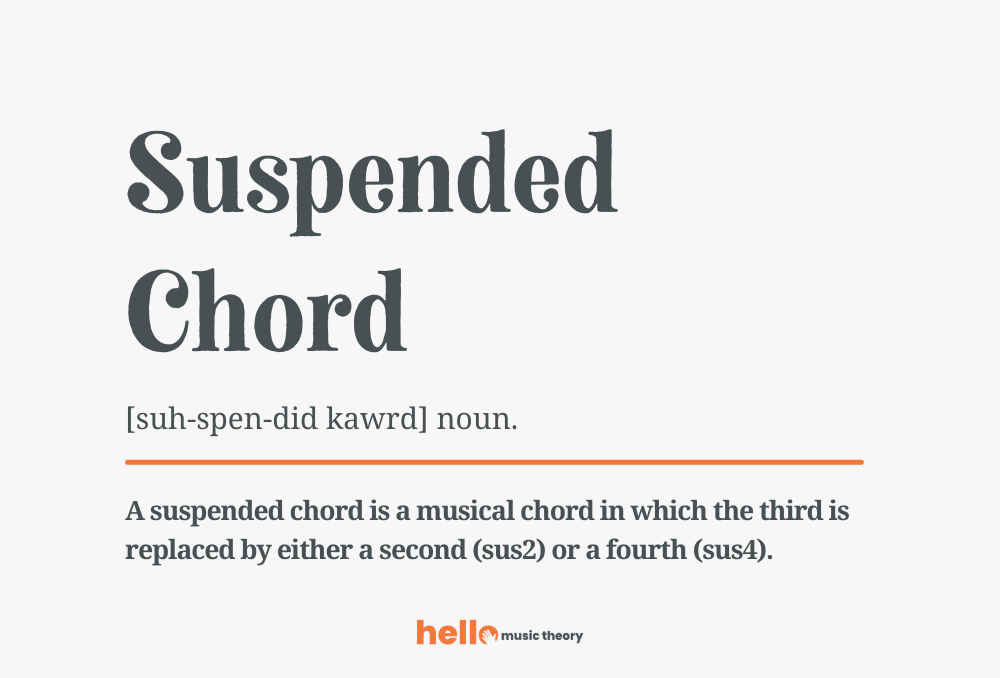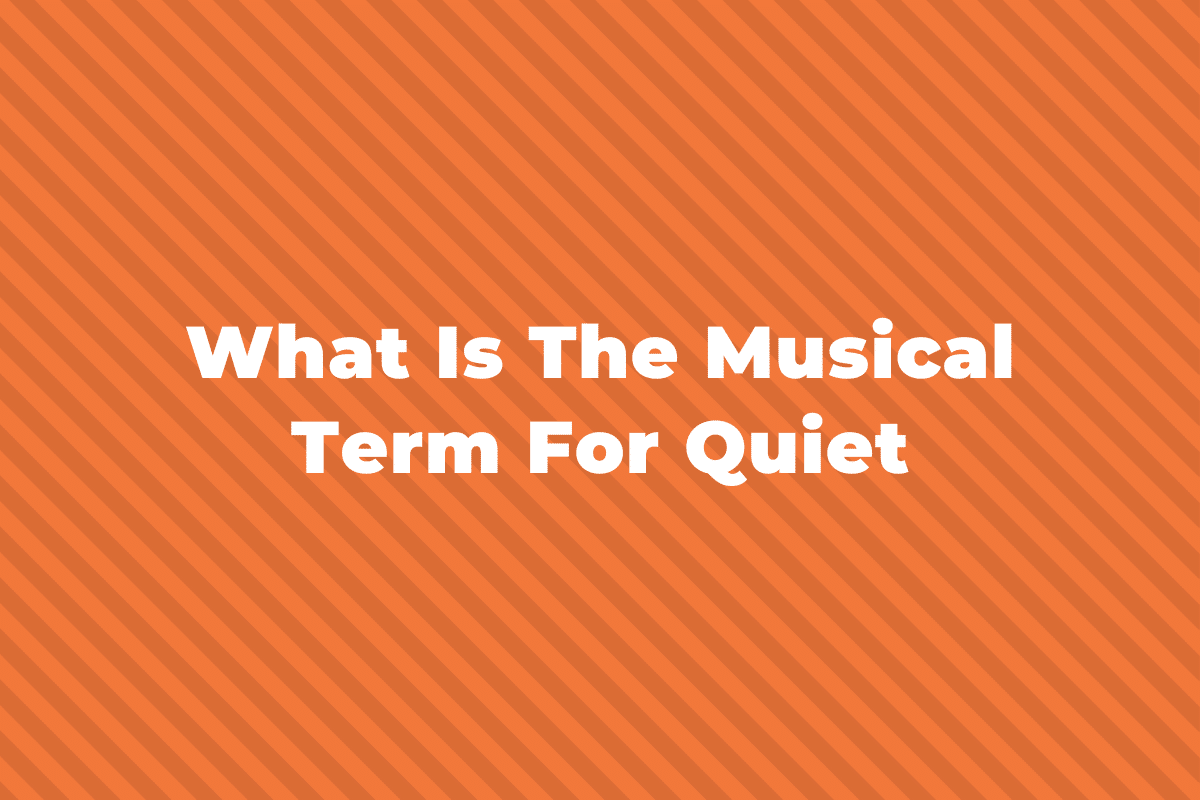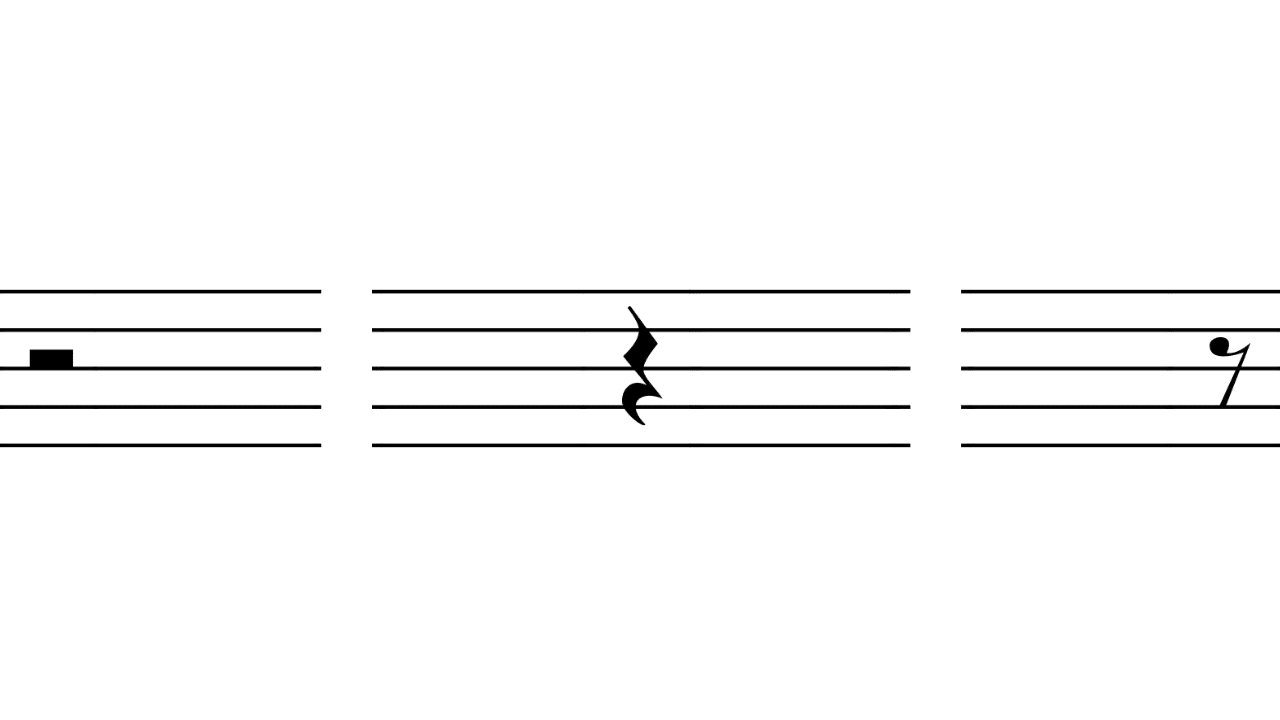Music, for the most part, is made up of chords. There are many different types of chords, like major and minor chords or augmented and diminished. But there are other, more unique types of chords, like Suspended Chords.
This post will go over everything you need to know about Suspended Chords. First, however, let’s look at what exactly is a chord.
What is a Chord?
A chord is when you play or sing two or more notes at the same time.
One note played after another is a melody, but if there are more than one simultaneously, you get a chord.

Chords with only two notes are called intervals, or dyads.
You can learn more about intervals here, but for this post we don’t need to know about them.
There are lots of different types of chords, but we’re going to focus on chords with three notes which is called a triad chord.
Between each note in a chord is an interval.
For a three-note chord, there are two intervals used.

The vast majority of chords use some combination of a Major 3rd (4 semitones) and a minor 3rd (3 semitones).
For example, a Major chord (above) uses a Major 3rd first and then a minor 3rd, and a minor chord uses a minor 3rd first and then a Major 3rd.

However, Suspended chords are different – they aren’t made from stacking two 3rds on top of each other.
Definition of Suspended Chords

A Suspended Chord is unique because it’s not made from 3rds.
Chords made by stacking 3rds are called tertian chords, and Suspended chords are non-tertian.
Instead, a suspended chord has a note within it that is “suspended” either a 4th or a 2nd above the root note.
For example, starting on the note G, a typical G Maj chord would be G – B – D.
A suspended chord keeps the two outer notes (the G and the D), but the B is changed for the note either a 4th above G or a 2nd above G.
The note a 2nd above G is A, and the note a 4th above G is C, so the two suspended G chords are G – A – D and G – C – D.

How do you Label Suspended Chords?
With the two chords above, G – A – D and G – C – D, how would we write them if we were writing a chord progression with them in it?
Depending on whether the suspended note in the chord is a 4th or a 2nd above the root note of the chord we label it either sus4 or sus2.

Of the two, the sus4 version is much more popular – so much so that if you ever see the chord just written as Gsus (or Esus, Dsus, etc.) it will be the sus4 version.
Examples of Suspended Chords
The song “Maiden Voyage” by Herbie Hancock uses extended (meaning with additional notes) suspended chords.
The main progression is D7sus(9) ⇨ F7sus(9) ⇨ E7sus(13,9) ⇨ Dbm9.
Another famous example of suspended chords in music is “Pinball Wizard” by The Who.
After the initial opening of the song (which has multiple sus4 chords in it) at 0:17 the main guitar riff starts with a Bsus ⇨ BMaj back and forth progression.
But perhaps the most famous use of sus chords in music is Tom Petty’s “Free Fallin”.
The progression goes from a F Maj ⇨ Fsus4 in the first two chords of the song.
That’s it for Suspended Chords
Those are all the main points about suspended chords.
Also written as sus4 and sus2 chords, just think of them as chords where the middle note (the 3rd) is suspended in between the root and the 5th.



